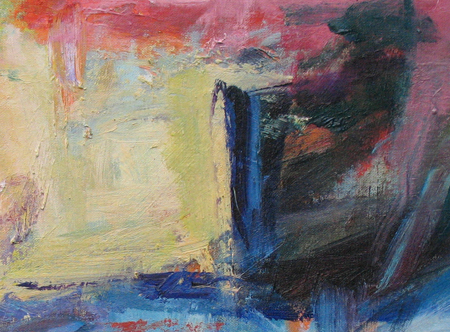It’s difficult to write an artist’s statement and at best, is only an approximation of what makes up the actual painting. Many painters have refused to describe their work, others merely offer a hint of what their motivation or muse may be. Yet this is required for grants, for galleries and museum exhibits. Even though one friend has maintained that Twyla Tharp for a Guggenheim application, wrote this one phrase and got the grant: ‘I dance’.
I’ve often wondered why a musician isn’t required to write an essay about his/her composition, while a painter or sculptor must somehow communicate in words, what he or she is already communicating in a visual medium. Why is music so readily accepted, while art must be defined in language. That is the irritating expectation of the visual artist.
One of the best books written from the point of view of the artist, is Katharine Kuh’s 1960 ‘The Artist’s Voice, Talks with Seventeen Modern Artists’. She includes a diversity; Calder, Albers, Hopper, Duchamp and others. Self taught artist Morris Graves offered a wonderful description of how and why he painted. To her question of ‘what do you want to get across to others?’ he answered:
‘I want to get across to me‘
‘…people occasionally say to the painter, ‘What you’ve said in the painting is my experience too. I agree, it confirms me.’ That’s the communication, but it’s not the first aim.
The act is a meditation in itself…. Painting is a way of knowledge.’
That is all a way of saying there’s no literal way to describe what goes into making art. Howard Hodgkin skitters around the same premise, relying on memory and emotion to sum up his working methodologies.
from a 2006 interview with Howard Hodgkin:
‘The overriding impulse to make the painting comes from memory and the emotion that memory can carry.
…He has always thought of himself as a representational painter. The term colourist, he says, has no meaning except in terms of very bad art. There is no colour for its own sake; he is not involved in making decoration. The paintings arise from precise occasions, precise emotions. He begins work in the same way as a certain sort of novelist can operate. You suddenly find that a hidden memory, an event that is lost, carries with it an emotion.’
Finally, John Haber aptly calls the verbosity of artspeak; martspeak. In a blog post from last April, Carol Diehl from ArtVents quotes his ’97 essay;
…am I imagining it, or do they blend together—the gallery press release and a parody of management jargon?…. It may have its roots in academia, where scholars hope to share their hesitant insights with students and peers. It may look back to art journals, where critics fumble for words to describe works of art rich in emotions and ideas. However, that is not where artspeak begins, and complaints about it hide its origins all too well.
Worse comes to worse, academics will trip up on their own humanity. Worse comes to worse, they will stumble on insights as unfamiliar and unpronounceable as art itself. Artspeak really starts sometime later, when critical clichés pass through the gallery system and into the marketing departments of major museums, eager for a larger public and bigger institutional gifts.
Â
Promoting art is business, big business, and money talks. I call its language martspeak.
So perhaps now that it’s been defined for us–the language of two industries, academia and the art market, who have joined together for their mutual economic benefit–when we see it, we’ll more easily recognize martspeak for what it is.
Haber continues:
Words never contain a work of art. Words can, though, encourage its reconstruction. They can create small openings in the walls that already exist, so that others may begin to look—and to see….
Art asks one to enter into a broken conversation, a half-overheard dialog between the work and the world. Newcomers to art distrust that demand. Most, often, too they would never know how to begin. A critic’s job is to break the ice.â€
Â
My newest painting isn’t yet finished, so nothing to say about it except- here’s a fragment.

